“Show me the money!”
–Rod Tidwell, played by Cuba Gooding, Jr. in “Jerry Maguire” (1996)
Off the sports field, there’s an invisible game being played at universities- balancing the athletics books. College sports rake in billions of dollars for schools, both directly (ticket sales, media rights, program donations) and indirectly (increasing school visibility, image enhancement, alumni relations). But to make money, you’ve got to spend money, and the college sports industry is certainly no exception. Schools invest major funds in their teams with the hope of boosting participation, image and performance, and reaping solid financial rewards. While it’s true that you can’t buy a championship title, schools can certainly attract and maximize top talent with hefty athletics scholarships, top coaches, and up-to-date-facilities, all of which cost big bucks.
In our ranking of The 25 Universities That Spend the Most on Athletics, we’ll look at the biggest overall spenders at the college level, and reveal exactly how much they’re investing. But first, we’ll show you where all that funding goes, and where it comes from, and we’ll weigh in on a subject of much debate: “are collegiate sports programs actually profitable?”
Where Does it All Go?
The allocation of sports funds varies by school and by year. The periodic updating of athletic facilities, from the arena to the weight room, is a major investment that can eat up a huge amount of university spending in certain years. A few expenses, however, remain pretty consistent.
The biggest consistent expense across Division I schools is staff, which accounts for almost 35% of spending on athletics. Half of this- or more- tends to go to the coach themselves, with the remainder paying administrative, support and maintenance staff. In fact, at top athletics programs, a coach’s salary can take up as much as 20% of the entire athletic budget. After staff, facilities and equipment account for about 20% of expenses, and financial aid for students accounts for almost 15%. Team travel, guarantees, recruiting and unspecified other expenses make up the remainder.
Where Does it Come From?
Income sources vary more than expenditures, and a school’s sports offerings can make a great difference in this respect. Football is a consistent “cash cow,” generating significant revenue from ticket sales. In fact, ticket sales are the number one revenue source among Division I schools with football departments, at 24%, but account for a slim 3% at those without. Schools with very high-performing, high-profile teams can also count on NCAA and media funds to cover close to 20% of expenses. Such schools make up the minority of schools whose sports programs pay for themselves.
The math looks different for most schools, however. Outside the top twenty or so, universities tend to have sports programs whose expenses outstrip their direct revenue. For such schools, the majority of funding comes from student fees and institutional support. Direct program donations are a secondary source of income. In fact, the average Football Bowl Subdivision (FBS) school spent $14.7 million in athletics subsidies in 2014.
So are University Athletics profitable?
Among the top ten spenders, there’s no question that sports programs pay for themselves. Those where the university at large subsidizes athletics- which accounts for most schools- clearly do not don’t have self-sustaining athletics programs. In terms of ticket sales, media deals, merchandise and direct donor contributions, most programs leave universities squarely in the red. Yet such schools continue to operate, and in many cases expand their programs, citing indirect benefits to the school that justify the investment.
Having a thriving athletic department enhances a school’s culture, builds school spirit and pride, increases alumni involvement, encourages donations, increases visibility, and attracts student applicants. Some of these benefits simply contribute to the school’s overall student quality of life. Others bring in cash indirectly; more alumni engagement, for instance, leads to more alumni donations to the school’s general fund. Such indirect benefits are difficult to quantify, but most schools seem to feel that, ultimately, athletic spending is more than justified.
Universities Spending the most on Athletics
1. The University of Texas at Austin
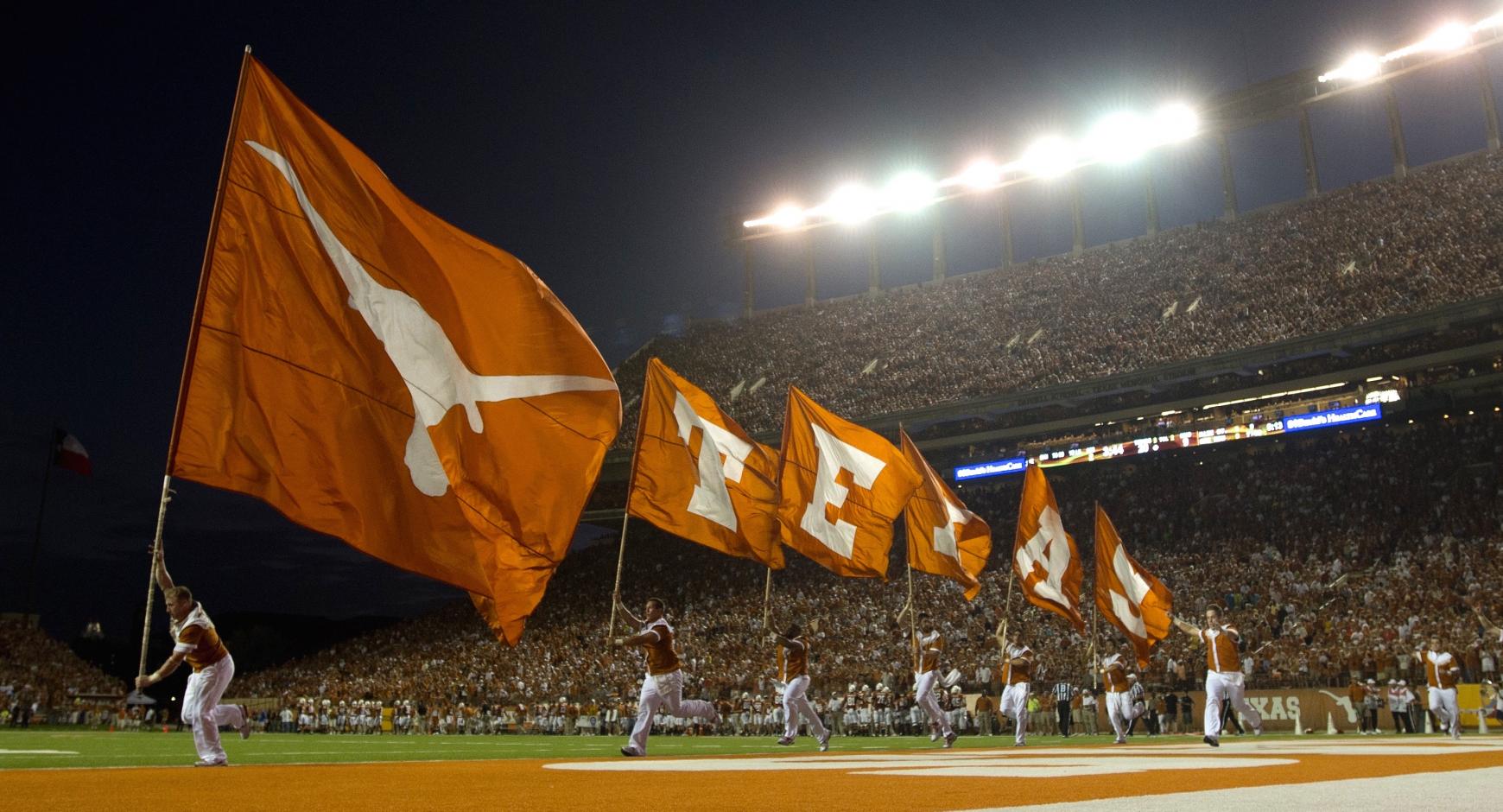
The University of Texas at Austin (“UT Austin”) is a public research university located in Austin, Texas. It is a Public Ivy and the flagship institution of the University of Texas System. The school dates back to 1881, and has a massive student body of 50,950, making it the seventh-largest school in the country by enrollment. This large university administers more than 350 undergraduate and graduate degrees in 18 schools and colleges, including highly-ranked schools of Engineering, Business, and Nursing. The UT Austin campus spans 1,438 acres and is home to seven museums and seventeen libraries, and there are more than 900 student clubs and organizations. Faculty at this elite school have won top honors, including a Nobel Prize, Pulitzer Prize, Wolf Prize, Primetime Emmy, Turing Award, and National Medal of Science. U.S. News and World Report ranks UT Austin 56th in National Universities, 18th in Top Public Schools and 14th in Most Innovative Schools.
Athletics at the University of Texas at Austin are as big, rigorous, and robust as the university itself. The university was highlighted as “America’s Best Sports College” in a 2002 article by Sports Illustrated. Student athletes compete as the Texas Longhorns and belong to the Big 12 Conference. Its Longhorn Network is so big as to comprise the only single-university-team college sports network. The Longhorns have an incredible record of success, winning four NCAA Division I National Football Championships, six NCAA Division I National Baseball Championships, and thirteen NCAA Division I National Men’s Swimming and Diving Championships. In fact, UT Austin has won more titles in men’s and women’s sports than any other Big 12 school in the league’s entire history. Longhorns fans are big spenders; the franchise was listed by Collegiate Licensing Company as the number one generator of annual trademark royalties from fan merchandise from 2005-2013. UT Austin spends big on its athletics as well. The university doles out a total of $307,723 in expenditures per student athlete, and provides no institutional support for their program, which is able to not only sustain itself, but to turn a healthy profit.
2. Louisiana State University
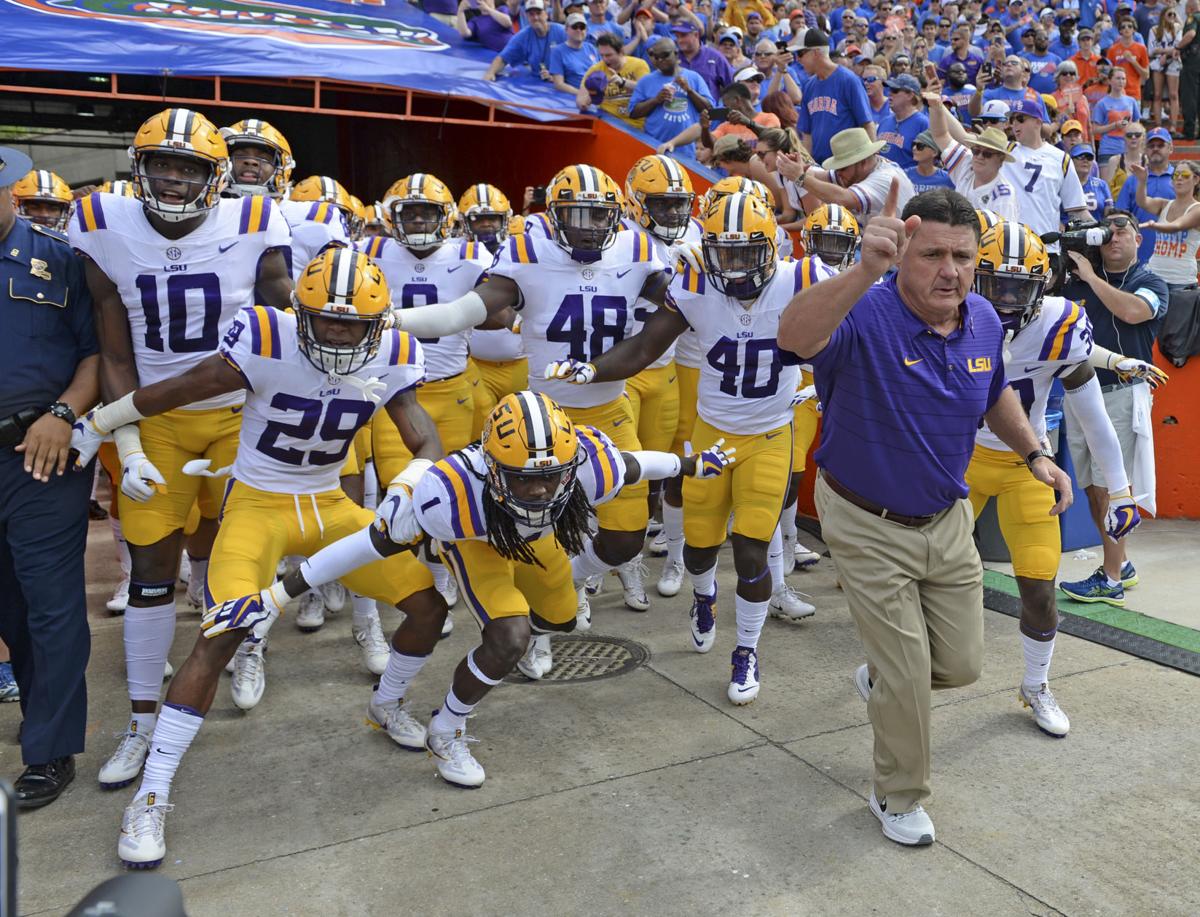
Louisiana State University (LSU) is a public flagship university located in Baton Rouge, Louisiana. The school dates back to 1853, when out was founded as the Louisiana State Seminary of Learning & Military Academy, and its current full title is “Louisiana State University and Agricultural and Mechanical College.” It is LSU is the flagship institute of the state of Louisiana, and that of the Louisiana State University System. Its large, 650-acre campus is home to a total of 30,863 students, enrolled in 14 schools and colleges. This land-grant, sea-grant and space-grant school has robust research facilities, and conducts as many as 800 research projects at a given time. U.S. News and World Report ranks this large and rigorous school 133rd in National Universities and 63rd in Top Public Schools, and counts many of its individual programs, such as Engineering, Fine Art, Social Work, and Library Science, among the nation’s top 100
Louisiana State University boasts a winning record. The student athletes, compete as The Tigers, and the school even keeps a live tiger, “Mike the Tiger,” in an enclosure near Tiger Stadium. The Tigers have one of the highest winning percentages of any college in the nation. The Tigers have won 48 national championships, ranking 14th in all-time highest number of total national championships. The Tigers have a longstanding football rivalry with the Ole Miss Rebels and Tulane Green Wave. The school has teams in 21 varsity sports (9 men’s and 12 women’s), with not only football, basketball and track, but also rugby, golf, gymnastics, and volleyball, among others. LSU belongs to the NCAA (National Collegiate Athletic Association) and the SEC (Southeastern Conference). LSU’s big wins reflect big spending, with the school investing a total of $272,205 in operating expenses per student athlete. The popularity of its sports, especially football, have allowed the Tigers to more than pay for themselves, however, and the university contributes no institutional support toward this figure.
3. University of Florida
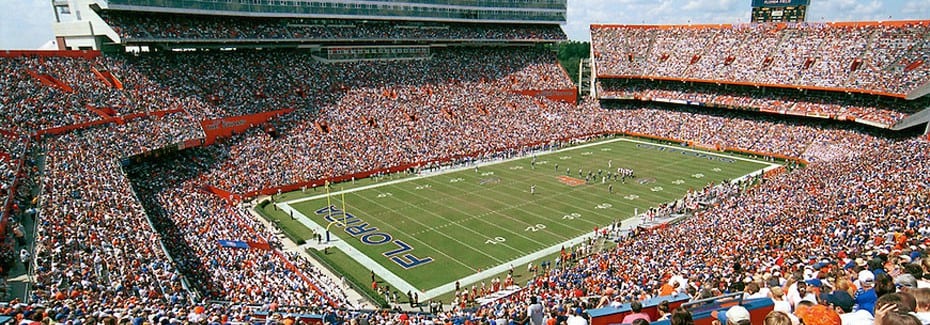
The University of Florida (UF) is a public institute which is based in Gainsville, Florida, and is a senior member of the State University System of Florida. The school was founded in 1835, making it Florida’s oldest university. UF has a large and diverse student body of 54,854 students, and a vast 2,000-acre campus housing over 900 buildings. It is the 8th-largest single-campus university in the nation. UF is organized into sixteen academic colleges and operates over 150 research centers and institutes. The Carnegie Foundation classifies the school as a research university with “very high research activity”, and UF is a member of the elite research university group, the Association of American Universities (AAU). UF is ranked 40th in National Universities and 14th in Top Public Schools by U.S. News and World Report.
The University of Florida’s student athletes are known as the Florida Gators. UF was one of the 13 original members which formed the Southeastern Conference in 1932. Today, the Gators consistently place among the nation’s top college teams. The Gators have won the SEC’s All-Sports Trophy 27 times since its introduction in 1984, and been ranked in the top 10 Division I teams by the the National Association of Collegiate Directors of Athletics (NACDA) for the NACDA Directors’ Cup. The Gators and compete in the National Collegiate Athletic Association (NCAA) and the Southeastern Conference (SEC). UF has a total of 12 women’s varsity sports and 9 men’s, including lacrosse, field and track, gymnastics, golf, baseball and, of course, football. UF’s sports expenditures come to $244,891 per athlete, none of which is paid for by the university itself, masking this one of the few fully self-sustaining university athletic departments.
4. Auburn University
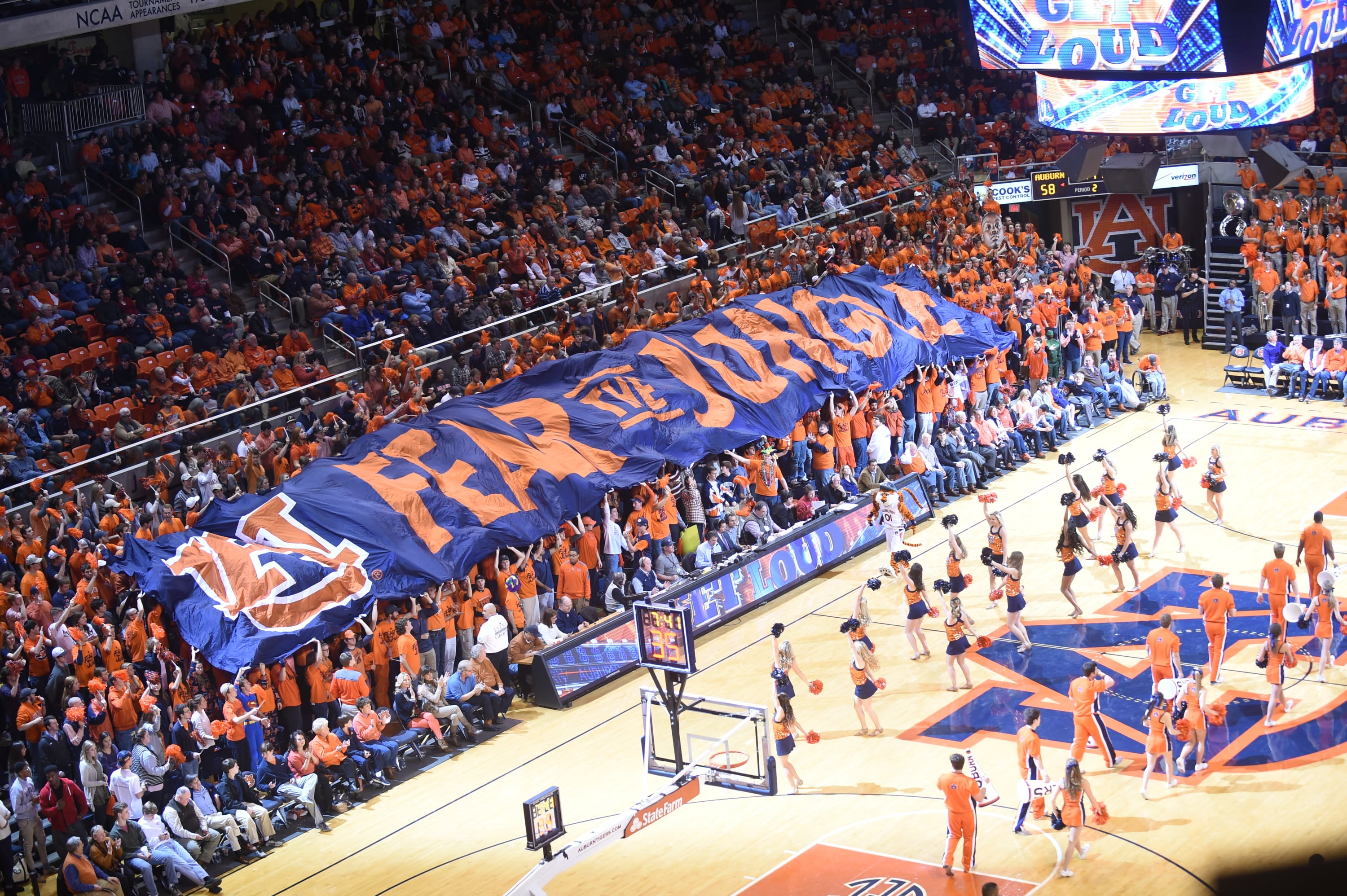
Auburn University (AU) is a public research university based in Auburn, Alabama, and one of that state’s two public flagship universities. It is the second largest school in the state, with over 29,000 students. AU las launched in 1856 through the Methodist Episcopal Church, South, as “East Alabama Male College,” and became “Agricultural and Mechanical College of Alabama,” the the state’s first public land-grant university, in 1972. By 1960, the school had become coeducational and began offering polytechnic and liberal arts programs, and assumed full university status. Today, it is a research-intensive land-grant, sea-grant, and space-grant university, and has been listed among the nation’s top 50 universities 20 consecutive years. Among its many highly-ranked programs, AU is frequently recognized for the strength of its departments of engineering, architecture, aeronautics, and economics.
U.S. News & World Report ranks AU 103rd in National Universities and 48th in Top Public Schools.
Auburn University students compete as the Tigers in Division I-A of the NCAA and the Western Division of the 14-member Southeastern Conference (SEC). The Tigers have won no less than 19 intercollegiate national championships, including 17 NCAA Championships, in football, swimming and diving, track and field, and equestrian. AU has also won 70 Southeastern Conference championships. Among the school’s many colorful sporting traditions is the unique tradition of having a falconer release a live, trained eagle before football games, which flies around the stadium before landing in the middle of the athletic field. Auburn spends a hefty $237,162 per student on its athletic program, of which the university itself contributes some $8,817, about 27%.
5. University of Kentucky
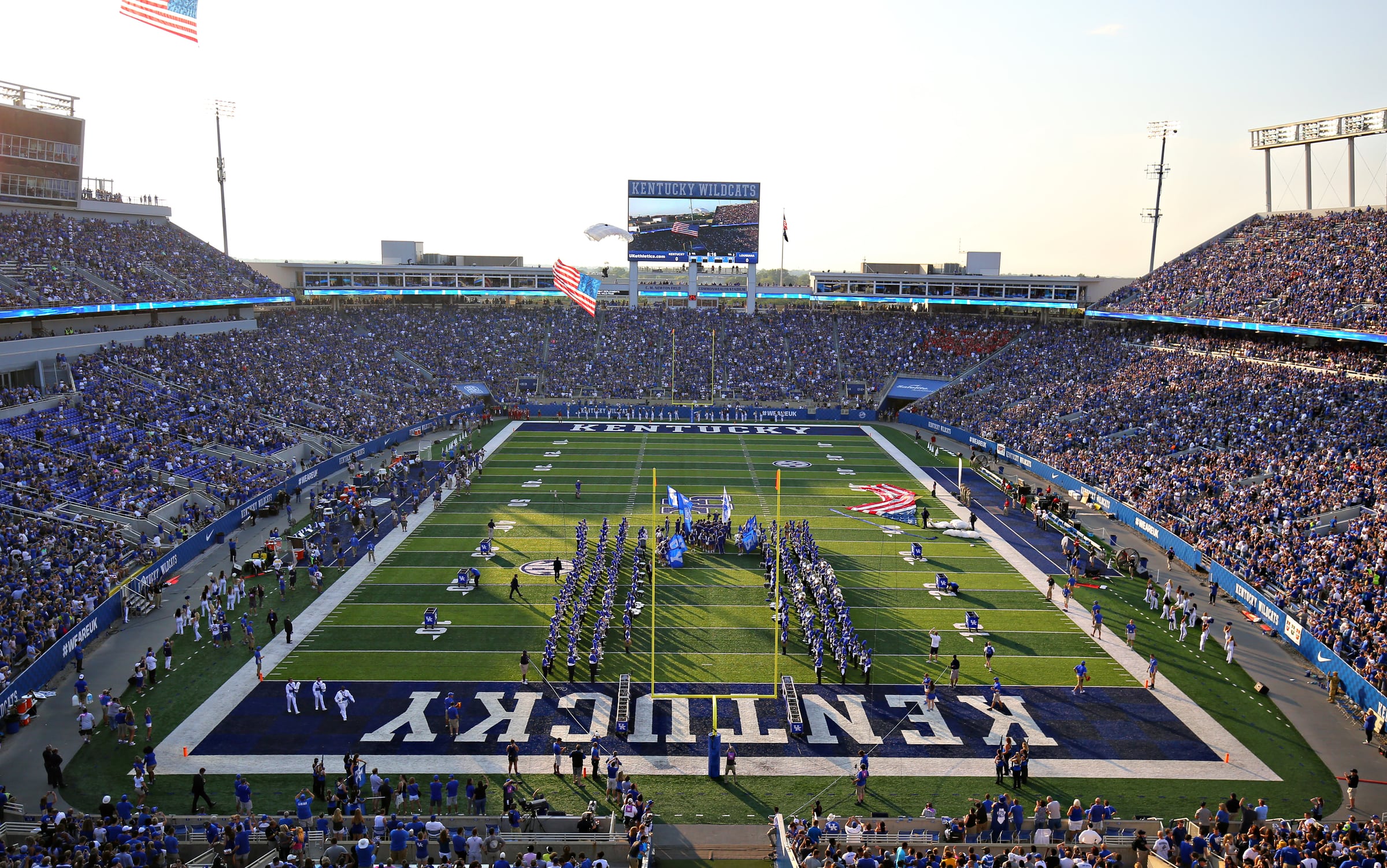
The University of Kentucky (UK) is a public university located in Lexington, Kentucky. The school was established in 1865 as the all-male “Agricultural and Mechanical College of Kentucky,” becoming coeducational in 1880. Today, UK serves a large student body of 30,720, and is the largest school in Kentucky, and one of just two land-grant universities in that state. UK is divided into 16 academic divisions, and offers 93 undergraduate, programs, 99 master programs, 66 doctoral programs, and four professional programs. Its 784-acre urban campus houses no less than 15 libraries, 23 residence halls, an arboretum and a botanical garden. Its admissions are selective and its academics are rigorous, with especially respected programs in business and engineering. U.S. News and World Report ranks UK 133rd in National Universities and 63rd in Top Public Schools.
University of Kentucky student-athletes compete as the Wildcats in Division I and the SEC, and the school is a founding member of the Southeastern Conference. The Wildcats have a wining track record at the national level. The school has won 11 national championships, with the most recent being a 2012 win by the men’s basketball team. UK students have competed in intercollegiate sports since the 1890’s, and has set several records, including becoming the first school to reach the 1000 all-time wins in 1969 and the first college basketball team to reach 2000 all-time wins in 2009. In addition to ten men’s intercollegiate sports and eleven women’s sports, UK sponsors a co-ed Rifle team, which competes in the Great America Rifle Conference, and won a national championship in 2011. Outside the varsity level, the school has teams in rugby and ice hockey. UK is one of the few schools whose athletic programs are entirely self-sustaining. The school spends $223,176 on resources for student athletes, none of which is contributed by the school itself.
6. Florida State University
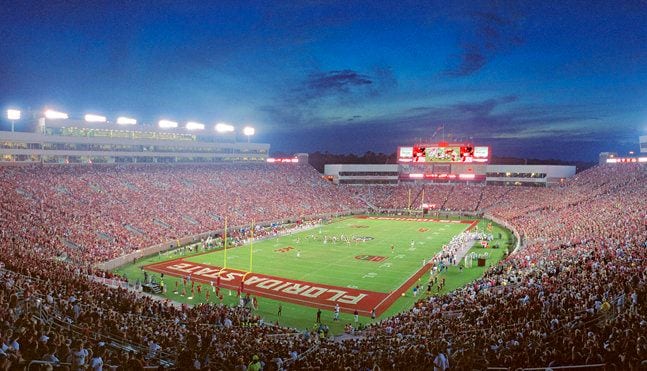
Florida State University (FSU) is a public space-grant and sea-grant research university located in Tallahassee, Florida. The school belongs to the State University System of Florida as a senior member, and is the oldest continuous institute of higher education in the state. FSU was established in 1851, just 32 years after the acquisition of the Florida Territory from Spain by the United States. It was originally the Florida Institute, a school for boys, and later became West Florida Seminary, then merged with the Tallahassee Female Academy and became coeducational in 1858. Today, FSU comprises 16 divisions and over 110 centers, facilities, labs and institutes. SFU also houses the state’s only National Laboratory, the National High Magnetic Field Laboratory, and has been responsible for research such as anti-cancer drugs and nanotube technology. It is among the top 15 universities in terms of physical sciences funding awarded by the National Science Foundation. FSU is classified as a “Research University with Very High Research” by the Carnegie Foundation and U.S. News and World Report ranks the university 81st in National Universities, 33rd in Top Public Schools, and 98th in Best Value Schools.
Florida State University sponsors teams known collectively as the “Florida State Seminoles,” who compete in National Collegiate Athletic Association (NCAA) Division I and the Atlantic Coast Conference (ACC). Traditional rivals include the University of Florida Gators, the University of Miami Hurricanes and the University of Virginia Cavaliers. The Seminoles have, over their 113 years’ history, won 20 national athletic championships and 78 individual NCAA national championships. FSU varsity teams include baseball, basketball, cross country running, football, golf, swimming, tennis, soccer, volleyball and track & field, and the school also sponsors club teams in bowling, crew, rugby, soccer and lacrosse. Sports are big business at FSU, and the latest figures show that competitions brought in $121.3 million in revenues last year. To achieve this, the school spends $220,568 per athlete, of which the university itself lays out $8,808.
7. University of Oregon

The University of Oregon (U of O) is a public flagship research university which is based in Eugene, Oregon. It is the flagship of the Oregon State University System. U of O dates back to 1876, shortly after Oregon achieved statehood. Today, this large school has an enrollment of 22,980, and offers 316 undergraduate and graduate degree programs, including highly-ranked schools of Law, Business and Education. Undergraduates can take advantage of the unique U of O Professional Distinctions Program, which consists of extra academic concentrations, internships and career workshops. U of O operates 19 research centers and institutes, and has been designated as a research university with “highest research activity” by the Carnegie Foundation. It is ranked 103rd in National Universities, 141 in Best Value Schools, and 46th in Top Public Schools by U.S. News and World Report.
The University of Oregon students are known as the Ducks, and belong to the Pac-12 Conference in the National Collegiate Athletic Association (NCAA). The school’s longstanding rivalry with Oregon State University is one of the nation’s oldest, and has come to be known as the “Civil War.” Of the 18 varsity teams sponsored by U of O, the school is best known for its teams in football and track and field. U of O has won 28 NCAA team championships and 60 NCAA individual champions in track and field. In fact, the quality of the track program and its high-profile affiliation with the Nike brand has garnered the nickname “Track Town, USA” for the town of Eugene, Oregon. IN addition to football, and track and field, U of O sponsors men’s and women’s basketball, cross country, baseball, softball, men’s and women’s tennis, men’s and women’s golf, women’s soccer, women’s lacrosse, women’s volleyball, and acrobatics & tumbling. At the club level, the school operates Rugby, Soccer, Rowing, and Waterpolo. The school spend a sizable $219,157 per student athlete, of which $4,239 is paid by the school.
8. University of Kansas

The University of Kansas (KU) is a public research university which operates multiple campuses and extension sites in Kansas, including Lawrence, Kansas City, Overland Park, Topeka, and Garden City, among others. KU is belongs to the Association of American Universities and is the flagship public university of the Kansas University System. The school was founded in 1865, and currently enrolls 28,447 students across its five campuses and additional locations.
The school comprises a number of divisions, including schools of Architecture, Engineering, Journalism, Law, Medicine, Pharmacy, Music, and Social Welfare. The university offers more than 345 undergraduate and graduate degree programs, with rigorous academics. U.S. News and World Report ranks KU 115th in National Universities, 89th in Best Value Schools, and 53rd in Top Public Schools.
The University of Kansas student athletes compete as the Jayhawks, and have a rivalry with the Kansas State Wildcats. They are one of three Kansas universities participating in NCAA Division I, and also belong to the Big 12 Conference. The Jayhawks have won 11 NCAA Division I championships, with their most recent taking place in 2013, when the women’s track and field team won the NCAA outdoor and became the school’s first women’s team to win a national title. Football at KU dates back as far as 1890, and the Jayhawks have played in the Orange Bowl three times, most recently in 2008. The team has brought in $26.67 million through a new eight-year contract with Adidas and $40.2 million from a new seven-year contract with ESPN Regional Television. Outside of varsity sports, the school offers rugby, hockey, soccer, and golf. KU’s athletics budget works out to $211,972 per student athlete. Of this total, the school subsidizes $4,506.
9. University of Mississippi
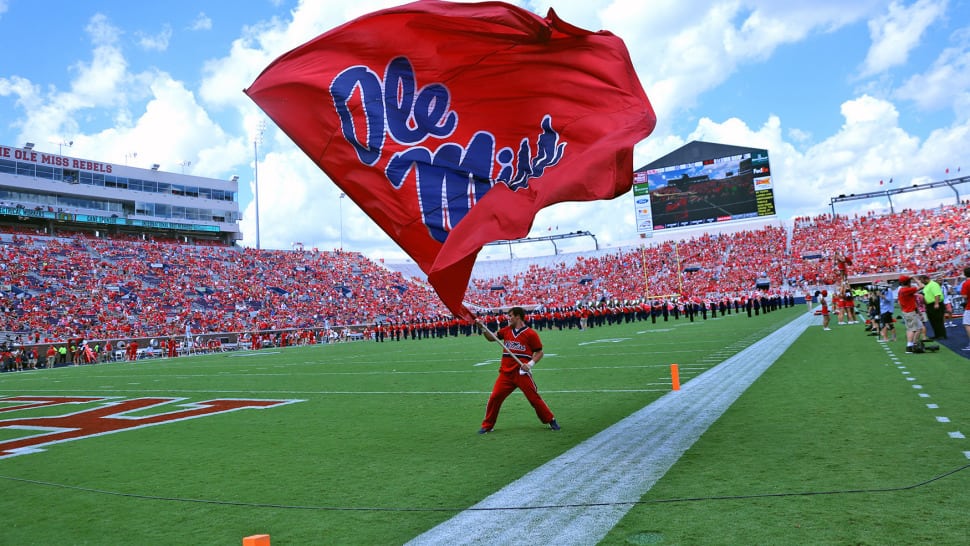
The University of Mississippi (“Ole Miss”) is a public research university located in Oxford, Mississippi. It is a flagship public university, as well as a Sea-grant and Space-grant school. The school was founded in 1844, and for 23 years, served as Mississippi’s only public institution of higher learning. Including the University of Mississippi Medical Center in Jackson, it has the largest student population of any university in the state, with a total enrollment of 23,800. Popular majors a Ole Miss include Marketing, Education, Communications, and Finance, and the university operates schools of Medicine, Dentistry and Law. The school’s campus alumni include celebrated author William Faulkner, and alumni of Ole Miss include NFL players Archie Manning and Eli Manning. Ole Miss is designated as a “Doctoral University of Highest Research Activity” by the Carnegie Foundation and is ranked145th in National Universities, 73rd in Top Public Schools, and 97th in Best Value Schools by U.S. News and World Report.
Student athletes at the University of Mississippi are known as the Ole Miss Rebels, and compete in the Southeastern Conference (SEC) of the National Collegiate Athletic Association (NCAA)’s Division I. The school has a long sports history, with football dating back as far as 1890, when Ole Miss established the first football team in the state. The university also sponsors a large number of teams, with 18 men’s and women’s varsity sports. The Rebels’ rivals are the Mississippi State Bulldogs, the LSU Tigers, and the Arkansas Razorbacks. The school has recently initiated a process of divesting itself of Confederate imagery, with the aim of fostering a more diverse and inclusive environment, which has included replacing the longstanding “Colonel Reb” sports mascot with that of the Black Bear (which was itself recently voted for replacement with the Landshark). The school spends a total of $210,741 per student athlete, and of this total, some $5,104 per athlete is underwritten by the school itself.
10. The University of Tennessee
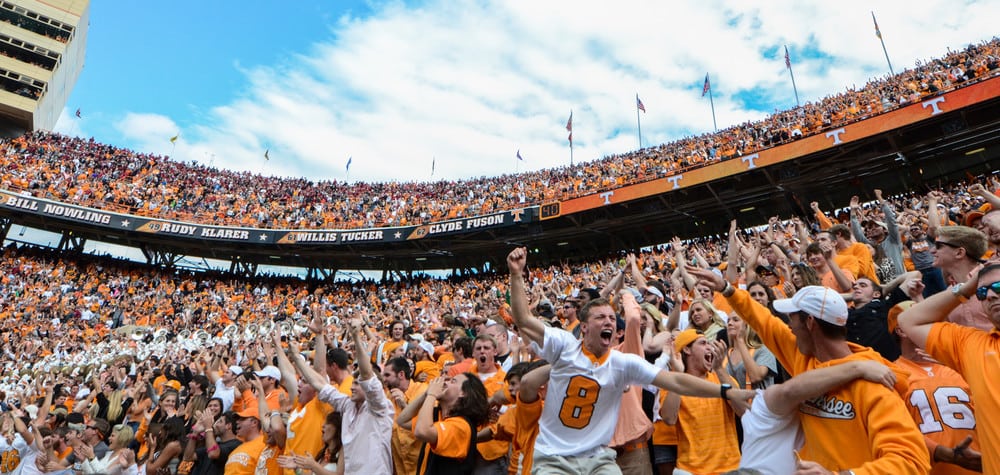
The University of Tennessee (UT Knoxville) is a public flagship university which is based in Knoxville, Tennessee. It is a sun- and land-grant university and the flagship of the statewide University of Tennessee system. The school traces its origins as far back as 1794, making it one of the oldest universities in the nation. UT Knoxville was originally founded as the all-male Blount College, two years before Tennessee achieved statehood. Today, UT Knoxville is home to about 28,000 students, and is recognized for especially strong programs in architecture, visual art, business, veterinary medicine, social work, and engineering. UT Knoxville students and faculty conduct extensive research at nearby Oak Ridge National Laboratory, and the school has a research endowment of $127,983,213. Seven alumni have become Rhodes Scholars, and another won a Nobel Prize in Economics. U.S. News & World Report ranked UT Knoxville 103rd in National Universities and 46th in Top Public Schools.
The varsity athletic teams of the University of Tennessee are known as the Volunteers, a reference to Tennessee’s nickname as the “Volunteer State.” The Volunteers compete in Division I of the National Collegiate Athletic Association (NCAA), and have participated in the member of the Southeastern Conference (SEC) since its inception in 1932, consistently placing at the top. The Volunteers have won 147 SEC championships and 23 national championships. The university is especially well-known for its teams’ performance in football and women’s basketball. The school’s football team won the very first BCS National Championship Game and ranks 9th in highest number of wins among NCAA programs. Women’s basketball has won eight NCAA Division I titles, and is second only to Connecticut’s team in number of championships won. The school’s stadium, Neyland Stadium, is the fifth largest stadium in the United States, and the sixth-largest in the world. UT Knoxville spends a total of $210,414 per student athlete. It is one of the few schools whose athletic programs are entirely self-sufficient, with no support provided by the school itself.
Top 15 Schools Paying the Largest Portion of the Athletics Tab Themselves
11. Virginia Commonwealth University
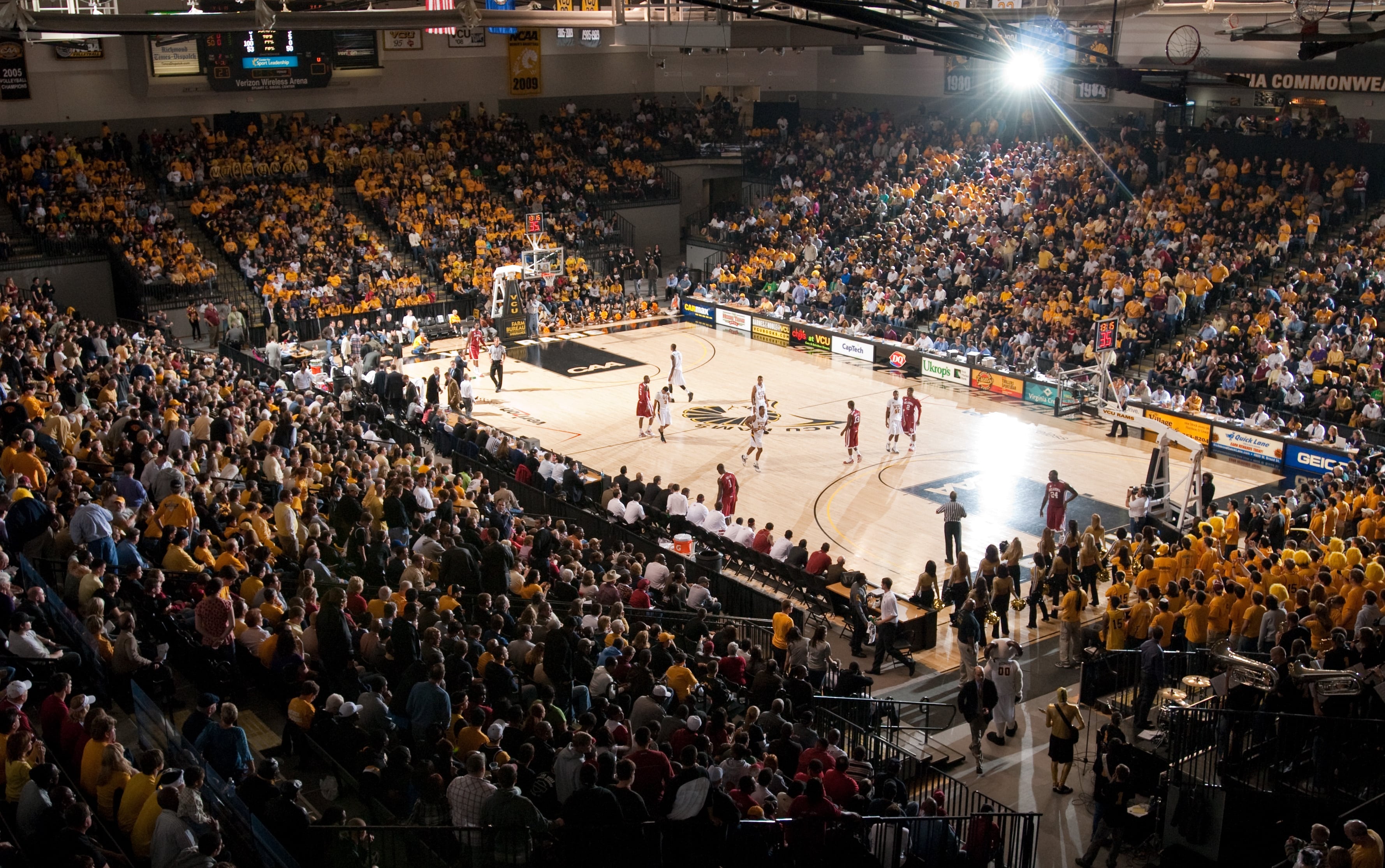
Virginia Commonwealth University (VCU) is a public research university which has two campuses located in Richmond, Virginia. VCU was established in 1968 through the merger of the Richmond Professional Institute with the Medical College of Virginia, institutions which date back as far as 1917 and 1838, respectively. Today, VCUn operates 14 schools and colleges, and serves 31,242 students through 217 degree and certificate programs. The university also operates the VCU Health System, which provides student health care education, research opportunities, and patient care. The university has an arts-focused branch campus in Qatar, and several regional facilities. Outside of classes, students can participate in the kayaking, backpacking and whitewater rafting trips through the university’s Outdoor Adventure Program, which coordinates The Carnegie Foundation considers VCU a doctoral university with “highest research activity,” and U.S. News and World Report ranks the school 171st in National Universities and 90th in Top Public Schools.
Varsity athletes at Virginia Commonwealth University are called the Rams, and have an intense rivalry with the Old Dominion University Monarchs. VCU has participated in Division I of the National Collegiate Athletic Association in the Atlantic 10 Conference for about 30 years. The Rams have won more than 30 conference championships and competed in many NCAA post-season championship events, including a men’s basketball run to the Final Four. Among the 16 varsity teams sponsored by the school, the most winning have been the men’s tennis and basketball teams. The men’s tennis team has won 12 CAA Championships, competed in 18 NCAA tournaments, and has ranked in the nation’s top 25 for 17 years. At the club level, VCU has teams in baseball, softball, cycling, rugby, cheerleading, ice hockey, ultimate, lacrosse, dodgeball, and crew. Over 64% of the school’s athletic funding is paid by the university, accounting for $72,788 out of the total $113,223 VCU spends on each athlete per year.
12. University of Houston

The University of Houston (UH) is a public research university located in Houston, Texas, and the flagship of the University of Houston System. The school was established in 1927 as Houston Junior College, became a university in 1933, and joined the state university system in 1963. With almost 44,000 students, UH is the state’s third-largest university, and offers 280 degree programs through a total of 14 academic divisions, including architecture, law, optometry, and pharmacy. The 667 acre campus is home to no less than 40 research centers, conducting research on biomedical science, clean energy, space exploration, and superconductors. The school’s faculty have won Pulitzer Prizes, a National Medal of Science, and a Nobel Peace Prize. UH was ranked 31st in the nation in the Social Mobility Index of colleges by Payscale and CollegeNet, and is ranked 192nd in National Universities and 102 Top Public Schools by U.S. News and World Report.
The varsity athletes of the University of Houston are known as the Houston Cougars, and the school has a 61-year history of athletic excellence. The Cougars are members of the American Athletic Conference and compete in the NCAA Division I in all sports. Their main rivals are the nearby Rice University Owls. Men’s basketball, golf, and football are the school’s top sports; the Cougars’ football team plays blow games on a regular basis, while the men’s basketball team has competed 20 times in the NCAA Division I Tournament (including five Final Four appearances). The men’s golf team holds the NCAA record for most national championship wins, with a total of 16. UH athletes also won a national title in cross country track. No less than 50 Olympic athletes got their start at UH, going on to win 33 medals, including 19 gold medals. The university has 17 varsity teams, including swimming and diving, baseball, golf, tennis, and track and field. UH spends a total of $114,166 on resources and scholarships for each student athlete. Of this total, the school underwrites just over half, at $65,312.
13. James Madison University
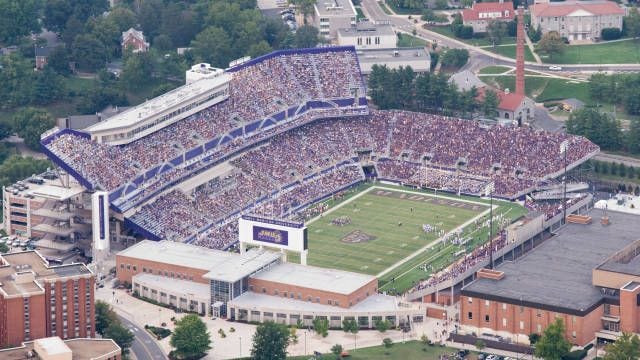
James Madison University (JMU) is a public research university located in Harrisonburg, Virginia. JMU dates back to 1908, the it was founded as a technical college for women, the State Normal and Industrial School for Women at Harrisonburg. JMU began admitting men in 1966, and achieved university status in 1976. Today, JMU has an enrollment of 22,667, and comprises seven colleges. The university offers 78 academic programs, including 115 bachelor’s, master’s, doctoral and specialist degrees. Class sizes at this large university are small, with a student to faculty ratio of 16 to one. Students at JMU also benefit from hands-on learning opportunities, including a variety of community service, research, internship, and study abroad experiential programs. JMU is included by Kiplinger among the “100 Best Values in Public Colleges” and BloombergBusiness ranks it 21st in Best Value for public schools. JMU is also ranked 7th in Regional Universities South, 2nd in Top Public Schools and 3rd in Most Innovative Schools by U.S. News and World Report.
James Madison University’s varsity athletes compete as the Dukes, with the “Duke Dog,” an English bulldog (wearing a crown and cape) serving as the mascot. The Dukes belong to the NCAA’s Division I in the Colonial Athletic Association and the Eastern College Athletic Conference, and the NCAA’s Football Championship Subdivision. JMU holds a (tying) record for third most national titles of any school in Virginia, having won four NCAA national championships, and was the first school in Virginia whose baseball team made it to the College World Series. The Dukes’ women’s field hockey team have won a national title in 1994, and the football won the NCAA Division I-AA national title in 2004 and in 2016. The women’s athletics program at JMU is among the oldest in the country, and dates back almost to the school’s founding. JMU has a total of 415 varsity athletes, and fields 18 sports at the intercollegiate level, including lacrosse, swimming and diving, volleyball, baseball, softball, field hockey, golf, cross country and track and field. The school spends a considerable sum on each student athlete, some $96,399, and the school subsidizes a little over half this cost, at $49,854 per athlete.
14. University of North Texas
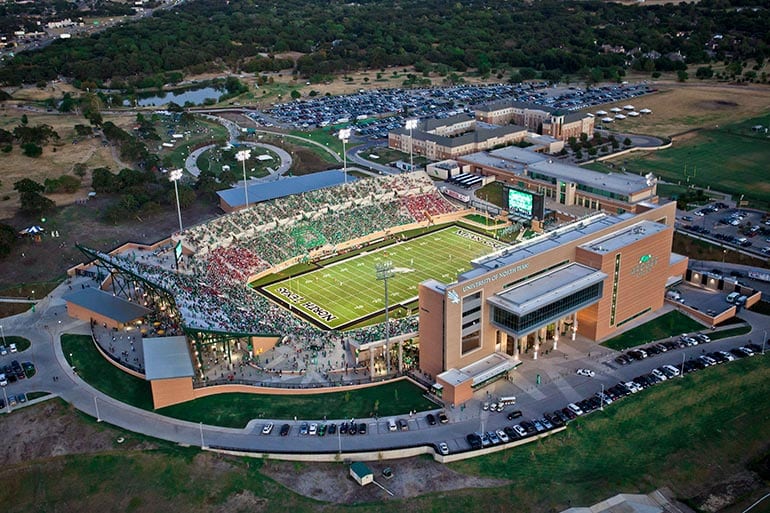
The University of North Texas (UNT) is a public research university based in Denton, Texas. It is the flagship of the University of North Texas System. UNT was first established as the Texas Normal College and Teacher Training Institute in 1890, a private, coeducational teacher’s college, and became a state school in 1899. Today, UNT is the sixth largest school in the state, with a total of 38,081 students enrolled in 97 undergraduate, 81 graduate, and 38 doctoral degree programs. Among its most highly regarded programs are business, engineering, psychology, biology, and education. Business is the most popular undergraduate major, followed by interdisciplinary studies, but the school also offers niche programs like aviation logistics, through the College of Business, and jazz studies, (the first such program in the nation) through the College of Music. UNT’s “Classic Learning Core,” an integrated liberal-arts curriculum, is unusual in a school of its size, and is designed to develop well-rounded graduates with critical thinking skills. UNT is designated as a “doctoral university with highest research activity” by the Carnegie Foundation, and U.S. News and World Report ranks it 231st in National Universities.
The University of North Texas is represented in varsity sports by the North Texas Mean Green, which replaced the North Texas Eagles as the team name in 1966. Scrappy the Eagle serves as the school’s mascot, and the school colors are green, black and white. The Mean Green teams participate in Division I of the National Collegiate Athletic Association (NCAA). Prior to joining Conference USA (C-USA) in 2013, the Mean Green competed in the Sun Belt Conference. The school sponsors a total of 16 intercollegiate sports teams: 6 men’s and 10 women’s, including Football, Golf, Soccer, Track and field, Softball, and Swimming and diving, among others. The Mean Green have won 24 conference championships, and made eight postseason bowl appearances and four appearances in the Football Championship Series (formerly I-AA) Playoffs. The many UNT athletic facilities are grouped together in Mean Green Village, a collection of stadiums, fields and other facilities located near the school’s main campus, which opened in 2006. UNT supports each Mean Green athlete with $97,108 in resources, of which the school itself subsidizes $62,357.
15. Western Michigan University
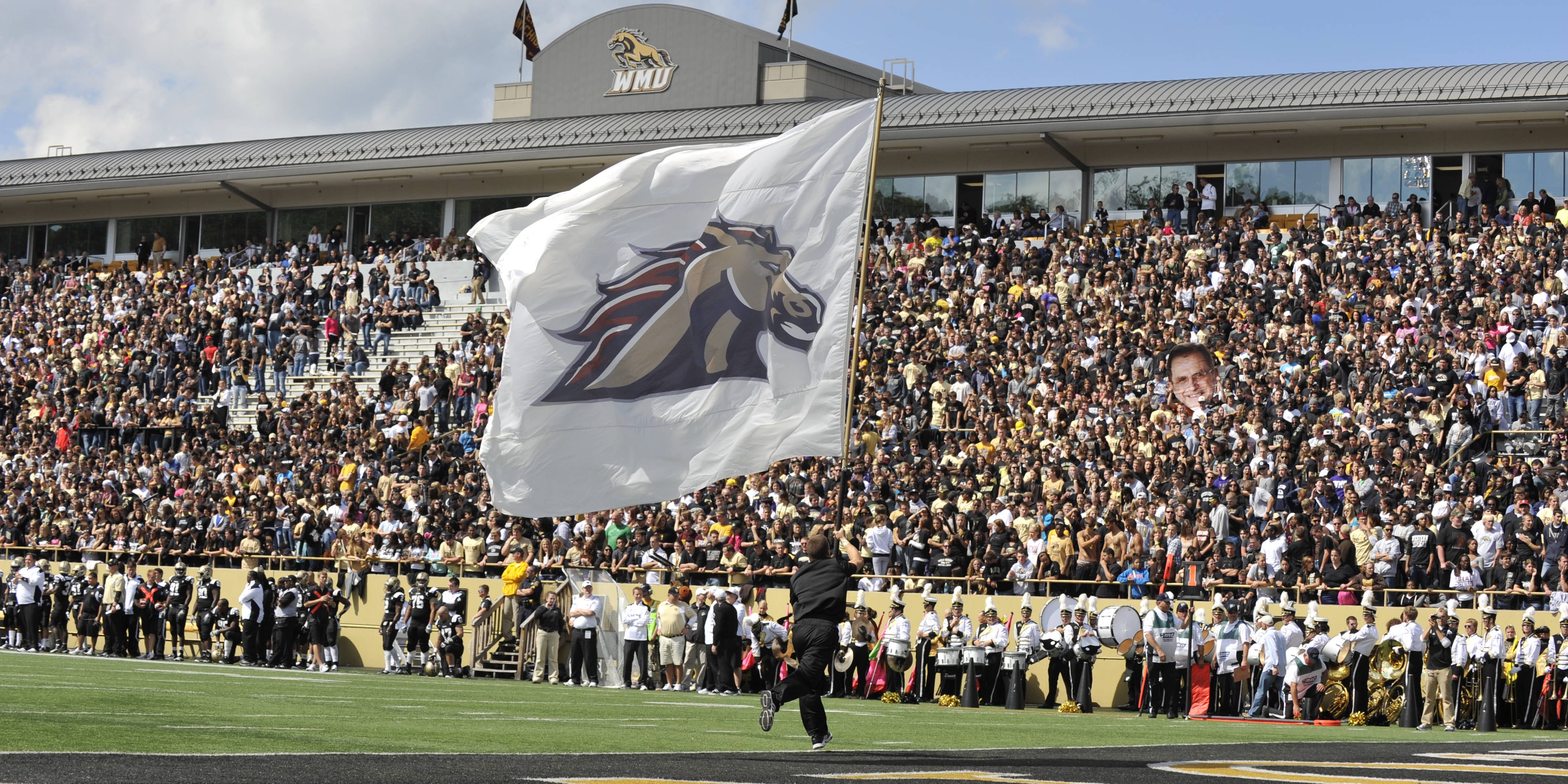
Western Michigan University (WMU) is a public research university based in Kalamazoo, Michigan, midway between Detroit and Chicago. WMU was founded in 1903 as Western State Normal School, a two-year teacher training school, and became a full university in 1957. Today, the university has 23,252 students enrolled in 147 undergraduate degree programs, 73 master’s degree programs, 30 doctoral programs, and one specialist degree program. The schools’ aviation program is ranked 5th in the nation. Its graduate health studies are also highly ranked, and include programs in speech-language pathology, rehabilitation, and audiology. The Carnegie Foundation has designated WMU a research university with “high research activity” and U.S. News and World Report ranks WMU 207th in National Universities and 113rd in Top Public Schools.
The Western Michigan University varsity teams are known as the Western Michigan Broncos, replacing their original name of the Hilltoppers. The school colors are brown and gold, and the Broncos’ main rivals are the Central Michigan Chippewas. The Broncos are a National Collegiate Athletic Association (NCAA) Division I Football Bowl Subdivision team, and compete in the Mid-American Conference. WMF fields a total of 16 teams in men’s and women’s sports, including basketball, baseball, football, cross-country, golf, gymnastics, soccer, softball, track and field, tennis, and volleyball. The men’s cross-country team is especially strong, having twice won the NCAA Division I National Championships. WMU spends $93,153 on resources per varsity athlete annually, with the university paying the majority of this sum, at a cost of $72,381.
16. Colorado State University
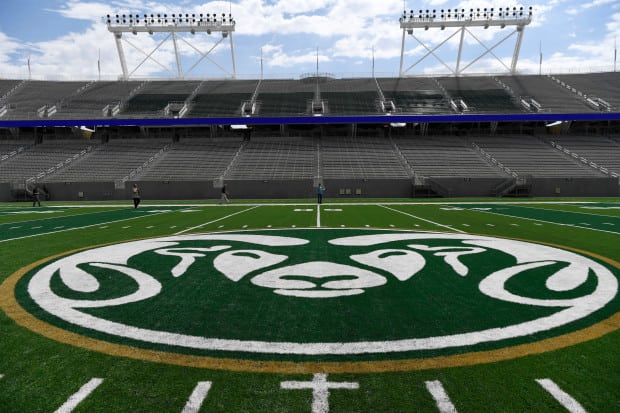
Colorado State University (CSU) is a public research university which is located in Fort Collins, Colorado. It is the flagship of the Colorado State University System and the state’s land grant university. Total enrollment at CSU comes to 32,236, yet this large school has relatively small class sizes, with low student-to-faculty ratio, at 17 to one.
CTU offers students extensive opportunities to learn outside the classroom as well, through highly active research and a variety of community learning initiatives, including field experience, internships, laboratory research, and exchange programs. The school spends as much as $3.759 million on research into fields like clean energy, and fighting climate change, infectious diseases, and bio-terrorism. Alumni have included multiple Pulitzer Prize winners, astronauts, CEOs, and two former Colorado governors. The Carnegie Foundation has designated the school a “community engaged university” and a research university with “very high research activity.” U.S. News and World Report ranks CSU 124th in National Universities and 58th in Top Public Schools, and 138th in Best Value Schools.
The varsity athletes of Colorado State University are known as the Rams, and the school colors are green and gold. The Rams compete in the Mountain West Conference (MW), which is a NCAA Division I conference and sponsors Division I FBS football.
The school sponsors a total of 17 intercollegiate sports teams, with 11 for women and 6 for men. Sports offered include volleyball, basketball, golf, tennis, swimming, softball, soccer, football and water polo, among others. The school has three main sports rivals: University of Colorado, the Air Force Academy, and the University of Wyoming. The Rams have won 9 Mountain West championships and regular season titles. The Rams comets in a newly-completed stadium, Colorado State Stadium which seats 41,000 fans. CSU spends a sizable sum on intercollegiate sports, investing $102,056 in resources per athlete, with the school itself contributing about half, at $53,717.
17. University of Central Florida
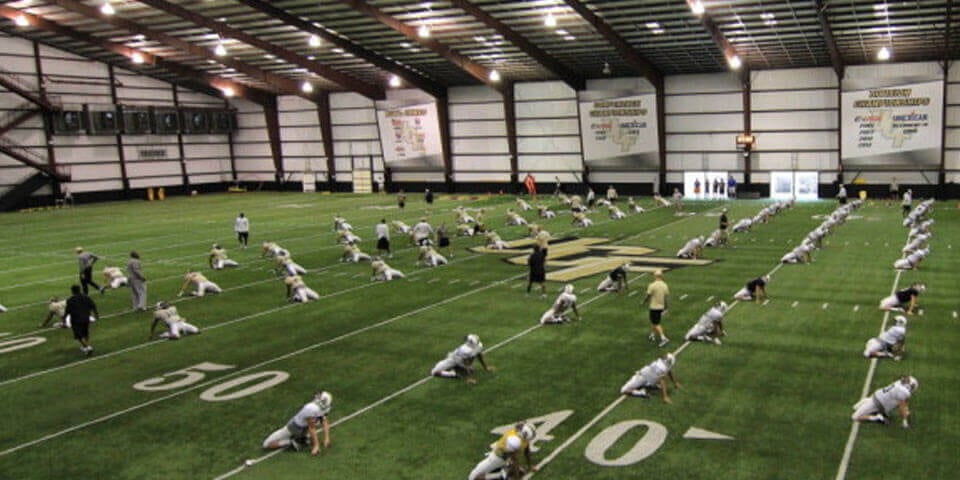
The University of Central Florida (UCF) is a public state university located in Orlando, Florida. It is the largest single-campus university in the entire nation, serving with 66,183 students on its massive 1,893-acre campus, situated 13 miles east of downtown Orlando. UCF offers over 200 degrees through 13 colleges at 10 regional campuses. The school was founded as Florida Technological University in 1963 by the Florida Legislature, with the aim of providing trained personnel for two nearby aerospace centers: Kennedy Space Center and Cape Canaveral Air Force Station. The school continues to be at the forefront of aerospace education and research; it is a space-grant university and leads NASA Florida Space Grant Consortium. The school’s best-ranked academic programs are engineering, business, and education. U.S. News and World Report ranks UCF 171st in National Universities, 25th in Most Innovative Schools, and 90th in Top Public Schools.
The University of Central Florida’s intercollegiate sports teams are known as the “UCF Knights.” They are represented by mascot “Knightro” and their colors are black and gold. The Knights compete in Division I of the National Collegiate Athletic Association (NCAA) and the American Athletic Conference. The school sponsors a total of 16 varsity teams: 6 men’s, 9 women’s and one co-ed. Varsity options include baseball, basketball, cheerleading, football, golf, rowing, soccer, softball, tennis, and track and field. UCF football teams have won two conference championships, and the Knights women’s basketball team has won two conference titles as well. The school’s co-ed cheerleading team has also won two national titles at the College Cheerleading and Dance Team Nationals, and was followed by WE tv’s hit cheerleading show, Cheerleader U, as reigning champions. Overall, a total of $102,910 is spent on each varsity student athlete at UCF. Of this, the school itself pays roughly half, or $53,503.
18. Texas State University
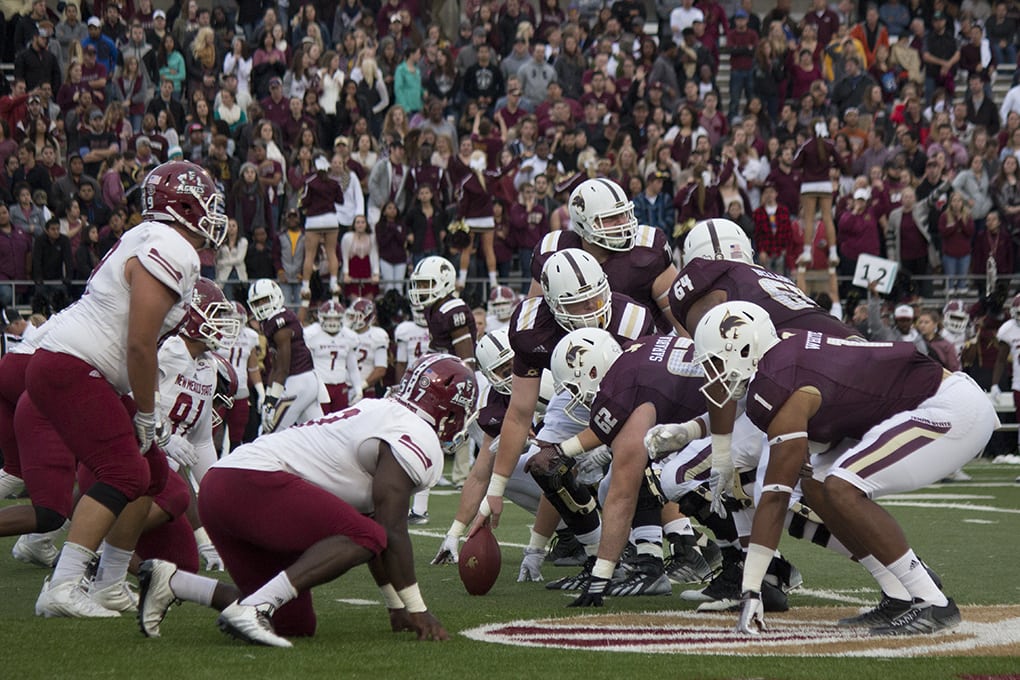
Texas State University (“Texas State”) is a public research university which is based in San Marcos, Texas. Texas State was originally founded in 1899 as the Southwest Texas State Normal School. With a student body of 38,849, it is the fifth-largest school in the state and the largest in the Texas State University System by enrollment. Texas State comprises 10 colleges and about 50 academic divisions, and its 492 acre campus houses no less than 245 buildings. The school also operates a technology commercialization and applied research facility (STAR Park) and the world’s largest forensics research center. Texas State is one of the highest schools in producing Fulbright Scholars nationwide. The Carnegie Foundation classifies the school as a “research university with higher research activity” and U.S. News and World Repot ranks it 231st in National Universities.
Texas State University’s 16 intercollegiate teams are called the Bobcats, and the school colors are maroon and gold. The Bobcats belong to the National Collegiate Athletic Association (NCAA) Division I and the Sun Belt Conference. Varsity rivals are the University of Texas at San Antonio and University of Texas at Arlington. Bobcats have won four Southland Conference tournaments in baseball and men’s basketball has won 11 regular season conference titles since 1950. The football team has been competing since 1904, and has won two Southland Conference championships, and, prior to that, won two Division II national championships. The team plays in Bobcat Stadium, which seats 30,000, thanks to a recent expansion. Other varsity sports include basketball, cross country, golf, soccer, tennis, track and field, and volleyball. Texas State spends a total of $90,908 per athlete. The majority of intercollegiate athletic funding, some $64,510 per athlete, is provided by the university itself.
19. The University of Cincinnati

The University of Cincinnati (UC) is a public research university which is located in Cincinnati, Ohio. The university was established 1819 as Cincinnati College, making it the oldest institution of higher education in Cincinnati. UC has a student body of 44,338, making it the second largest school in the state and one of the nation’s 50 largest. UC comprises 14 schools and colleges, and offers a wide range of academic programs, with 81 associate, 114 baccalaureate, 105 master’s, 66 doctoral, and 3 professional degrees. Among its innovations, UC was the first school to launch cooperative learning programs, and awarded the first bachelor’s in nursing. Researchers at UC develop the first oral polio vaccine and were the first to lasers in brain tumor removal. The school spends about $400 million in research annually, making it the nation’s 22nd-highest research spender. The Carnegie Foundation classifies UC as a doctoral research university with “very high research activity” and The Chronicle of Higher Education has designated it a “Research Heavyweight”. UC was ranked 135th in National Universities by U.S. News and World Report.
The University of Cincinnati athletes are knows as the Bearcats, and the school colors are red and black. CU fields a very large number of varsity teams- 19 in all. These include Basketball, Cross country, Golf, Football, Lacrosse, Soccer, Swimming & diving, Volleyball, and Track & field. The bearcats compete in Division I of the NCAA, and since 2013 has belonged to the American Athletic Conference (The American). Along with Wichita State University, CU is the only school in The American from the Midwest (all other teams are from the Northeast or South). The Bearcats have rivalries with Miami University, University of Louisville, University of Pittsburgh, and Xavier University. UC has won four individual and six team championships. The university is best-known for its long record of wins in basketball, though its football team has gained strength in recent years. The football team has played at the intercollegiate level since 1885, making it the fifth-oldest college football team in the nation. The university spends a total of $111,220 on each student athlete. The university provides funding for 45% of this figure, contributing a total of $49,854 per athlete.
20. University of Texas at El Paso

The University of Texas at El Paso (UTEP) is a public research university which is based in El Paso, Texas. UTEP was first launched as far back as 1914, and is the second oldest member of the University of Texas system. The university got its star as the State School of Mines and Metallurgy, and assumed its present name in 1967. UTEP is home to 23,397 students, and is the second-largest school to have a majority of Mexican-American students. The 366 acre campus features buildings as old as 100 years, constructed in a highly distinctive Dzong style, reproduced from the traditional architecture of Bhutanese fortified monasteries and administrative centers. UTEP offers 71 undergraduate degrees, 76 master’s-level degrees, and 20 doctoral degrees. University researchers have made advancements in Alzheimer’s treatment and the prevention of Chagas disease. The National Science Foundation has honored UTEP as one of just six schools designated as a Model Institution for Excellence, and U.S. News and World Report ranks it 231st in National Universities.
The varsity student athletes of the University of Texas at El Paso here known as the Miners, and school colors are dark blue, orange, and silver. The school has a total of 15 intercollegiate teams, including Basketball, Cross country, Football, Golf, Rifle, Track & field, Soccer, Softball, Tennis, and Volleyball. The school was the first Southern university to integrate its sports programs. In a famous 1966 game, UTEP’s all-black basketball team defeated an all-white team of Kentucky Wildcats, winning the NCAA men’s basketball championship and setting an historic precedent in varsity sports. The Miners have won a total of 21 NCAA Division I national championships, and ranks 10th overall in Men’s Sports Division I championships. UTEP spends $97,984 per students athlete, with the university itself providing just over half, some $53,166, of that figure.
21. University of Nevada, Las Vegas
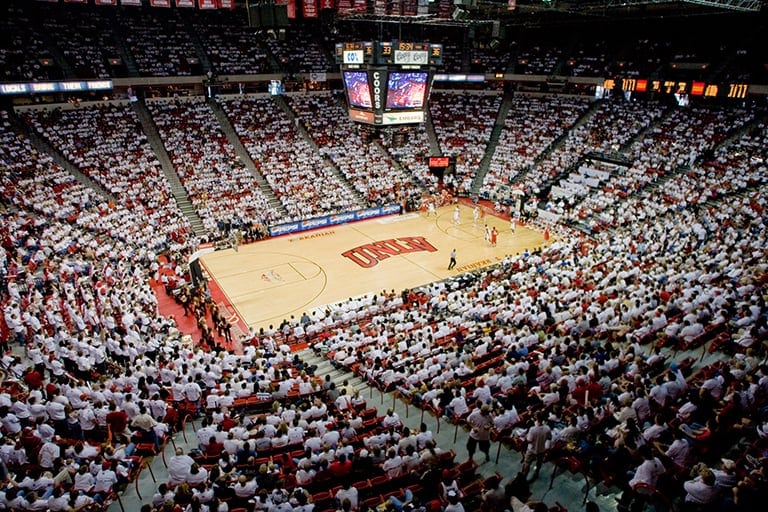
The University of Nevada, Las Vegas (UNLV) is a public research university located just outside in the Las Vegas, Nevada, in the town of Paradise, about a mile and a half from the Las Vegas Strip. Its proximity to this prominent tourism hub makes it an excellent locati0on for the study of hospitality, and UNLV’s William F. Harrah College of Hotel Administration is ranked among the country’s top hospitality programs. UNLV operates schools of Medicine, Dentistry, Business, and Law, and has the only Dental and Law schools in the state of Nevada. The school awards roughly 350 bachelor’s, master’s, and doctoral degrees, and has a large and diverse student body of 30,471. Business and Management are the university’s most popular majors, followed by Law Enforcement and Protective Services, and Health Professions. UNLV is designated as a “research-intensive university” by the Carnegie Foundation, and is ranked 231st in National Universities by U.S. News and World Report.
University of Nevada, Las Vegas competes at the intercollegiate level as the Rebels, with red and gray as their school colors. UNLV is a founding member of the Mountain West Conference, in the NCAA’s Division I, while the UNLV men’s soccer team and swim & dive team compete in the Western Athletic Conference. Altogether, UNLV fields teams in 17 varsity sports. The school has tradition of football a rivalry with the Nevada Wolf Pack, and competes annually in the Battle for Nevada, for which the Fremont Cannon serves as trophy. The cannon is valued at over $10,000, making it one of the most costly sports rivalry trophies. The university is best known for its men’s basketball program, the Runnin’ Rebels, which ranks as the third most winning team in Division I basketball history by percentage. In a famous win against Duke University, the Runnin’ Rebels set a record for largest margin of victory in a championship game, scoring 103-73. UNLV’s golf program is also strong, and won the 1998 NCAA Division I Men’s National Golf Championship. The golf program has produced PGA Tour golf pros including Skip Kendall, Bill Lunde, Chris Riley, Chad Campbell, Ryan Moore, Charlie Hoffman, Adam Scott, and Andres Gonzales. Each student athlete at UNLV consumes some $110,678 in funding. Of this figure, $47,423 is provided by the university itself.
22. Florida International University
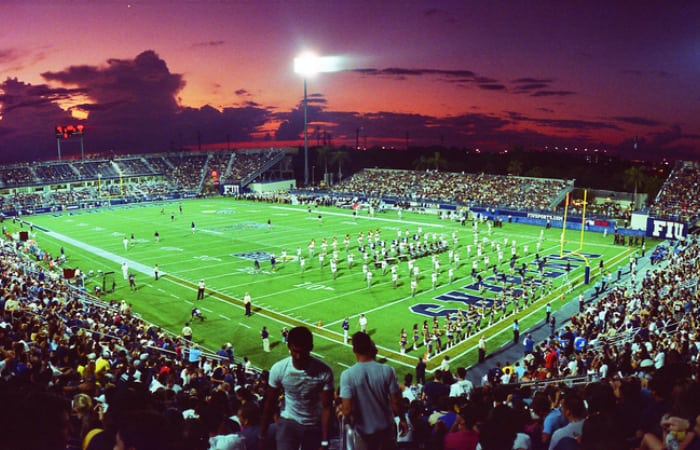
Florida International University (FIU) is a public research university which has multiple campuses in the Greater Miami area of Florida, including a main campus based in University Park. It is a member of the State University System of Florida. The school serves a total of 56,886 students, making it the largest school by enrollment in South Florida, the second-largest in the state, and the fourth-largest in the country. It comprises a total of 23 schools and divisions, including schools of engineering, business administration, architecture, law, and medicine. FIU has a 60% Hispanic student body, and is among the nation’s top top granters of bachelor’s degrees to Hispanic students. FIU administers 91 undergraduate programs of study with more than 280 majors, as well as 81 master’s, 34 doctoral, and 3 professional degrees. The school conducts rigorous research in the fields of information science, meteorology, and medical science, and the Carnegie Foundation has designated FIU as a research university with “highest research activity.” U.S. News and World Reports ranks the school 216th in National Universities, 122nd in Top Public Schools, and a prestigious 7th in International Business.
Florida International University varsity teams are known as the Panthers, and blue and gold are the team colors. The school’s 17 varsity teams belong to the NCAA Division I as part of Conference USA. The Panthers have rivalries with the Florida Atlantic University and the University of Miami, a rivalry played out in football in the annual Shula Bowl. The Panthers football team won the Sun Belt Conference Championship in 2010, and the baseball team has won several championships, including the NCAA Division II College World Series in 1980, the Conference USA Tournament in 2015, and the Sun Belt Conference Tournament Championship in 1999 and 2010. Other varsity sports sponsored by FIU include Beach volleyball, Cross country, Golf, Soccer, Track and field, Softball, and Swimming and diving. A number of former Panthers have gone on to become both professional and Olympic athletes, including Mike Lowell of the Boston Red Sox and Raja Bell of the Utah Jazz. FIU spends a total of $78,163 on each intercollegiate athlete. The university itself subsidizes the majority of this figure, providing $60,564.
23. University of Memphis
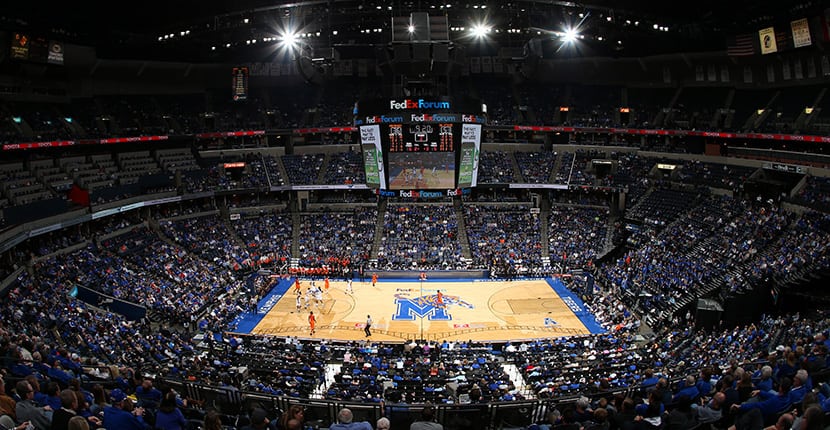
The University of Memphis (U of M), is a public research university located in Memphis, Tennessee. The U of M dates back to 1912, when it was established as West Tennessee Normal School in order to prepare students for careers as teachers. Today, the university occupies about 1,160 acres, situated 5 miles east of downtown Memphis, and serves a total of 21,521 undergraduate and graduate students. It was the flagship of the Tennessee Board of Regents system until 2017, when the member institutions each became independent. U of M operates multiple Centers of Excellence, and conducts cutting-edge3 research at the Center for Earthquake Research and Information (CERI), the Institute for Intelligent Systems, and the Advanced Distributed Learning Workforce Co-Lab. There are more than 100 areas of study available at the undergraduate and graduate level, and the school’s departments of business, engineering, and social work are especially well-regarded. U.S. News and World Report ranks U of M 231st in National Universities.
The University of Memphis’ varsity athletes are known as the Tigers, and the school colors are blue and grey. U of M’s mascot is TOM III, a live bengal tiger housed near the athletic facilities. The Tigers compete in Division I of the American Athletic Conference and the Great America Rifle Conference. The school is especially notable for its strength in football and basketball. As of 2011, the Tigers’ men’s basketball team was the 29th highest winning percentage in NCAA history. The football team has won more than 450 games since its founding in 1912, competed in nine bowl games, and won five conference championships. The school sponsors a total of 20 intercollegiate teams, including Cross country, Golf, Football, Rifle, Golf, Soccer, Rifle, Softball, and Tennis. The U of M supports each athlete with a sizable $110,993 in resources. Of this sum, the institution itself underwrites $46,636.
24. Old Dominion University
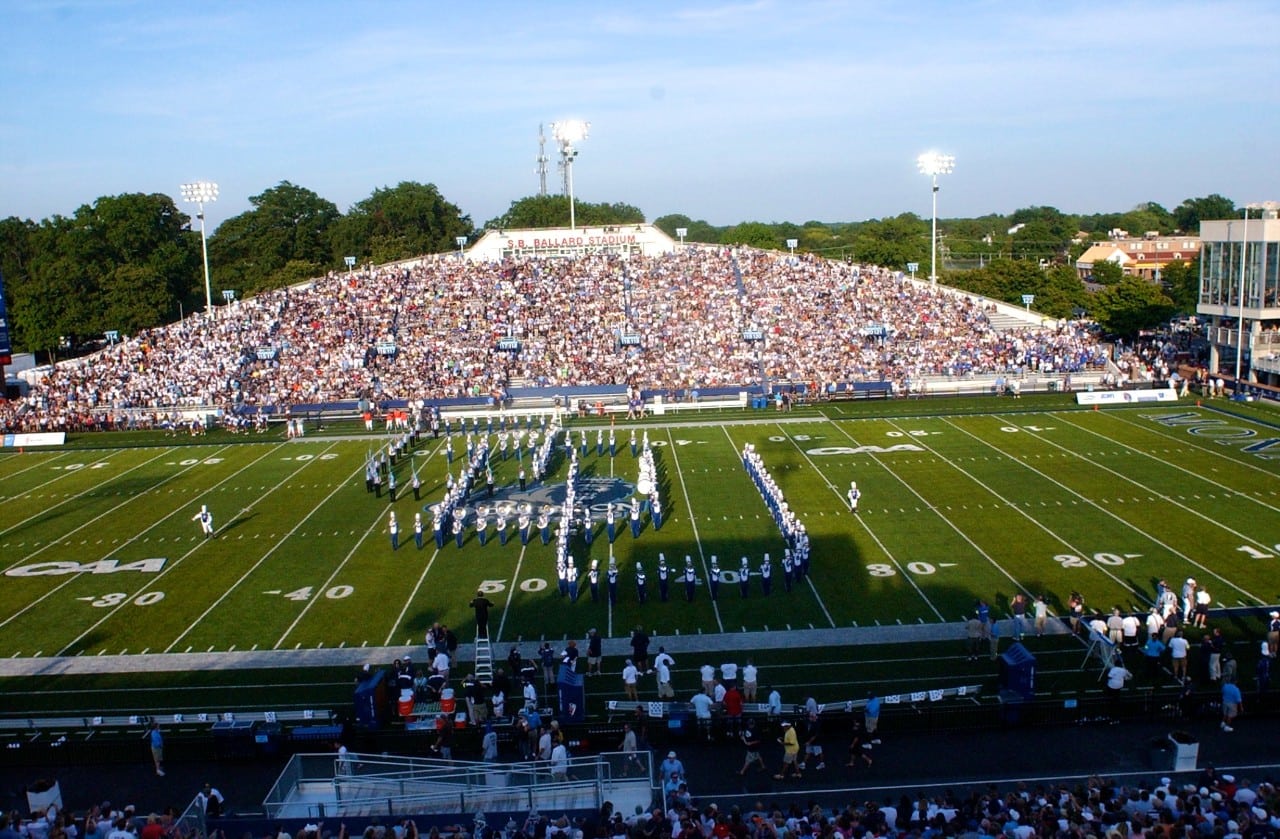
Old Dominion University (ODU) is a public research university which is based in Norfolk, Virginia, and operates two nearby satellite campuses. The school was founded in as the Norfolk Division of the College of William & Mary in 1930, with the first classes held in an abandoned elementary school. The branch became a fully independent institute in 1962, and today is one of the largest universities in the state, with a total of 24,670 students. Of these, nearly one-third are enrolled in the school’s popular online distance education programs; ODU currently ranks as one of the nation’s largest providers of online degrees. The university confers more than 168 degrees: 75 bachelors, 41 masters, 22 doctoral degrees and 2 education specialist programs. Of these, the school is especially well-recognized for its business and engineering programs, and its location near the Hamptons Road maritime hub makes it well-suited to deliver hands-on education in commerce, international affairs and cultures. ODU is active in research, and operates the Center for Accelerator Science and the Virginia Modeling, Analysis and Simulation Center. The Carnegie Foundation recognizes the university as a doctoral university with “higher research activity.” U.S. News and World report ranks in 231st in National Universities.
Old Dominion’s intercollegiate athletic teams are known as the Monarchs, and the school colors are silver, and dark and light blue. The school sponsors a total of 18 men’s and women’s teams, which compete in the NCAA Division I Conference USA (C-USA). Sports offered include baseball, basketball, swimming and diving, wrestling, field hockey, and lacrosse, as well as maritime sports such as rowing and sailing. Of these, the most well-known varsity sport at ODU is the women’s basketball team (the “Lady Monarchs”). The Lady Monarchs have won three national championships in 1979 (AIAW), 1980 (AIAW) and 1985 (NCAA), and played in the 1997 Women’s NCAA Championship Game. Other teams at ODU have won an additional 28 national championships (including 15 in sailing and 9 in field hockey) and 49 championships in the Colonial Athletic Association. Each athlete at ODU consumes $81,177 in resources annually. Of this figure, the school provides $53,926.
25. Middle Tennessee State University
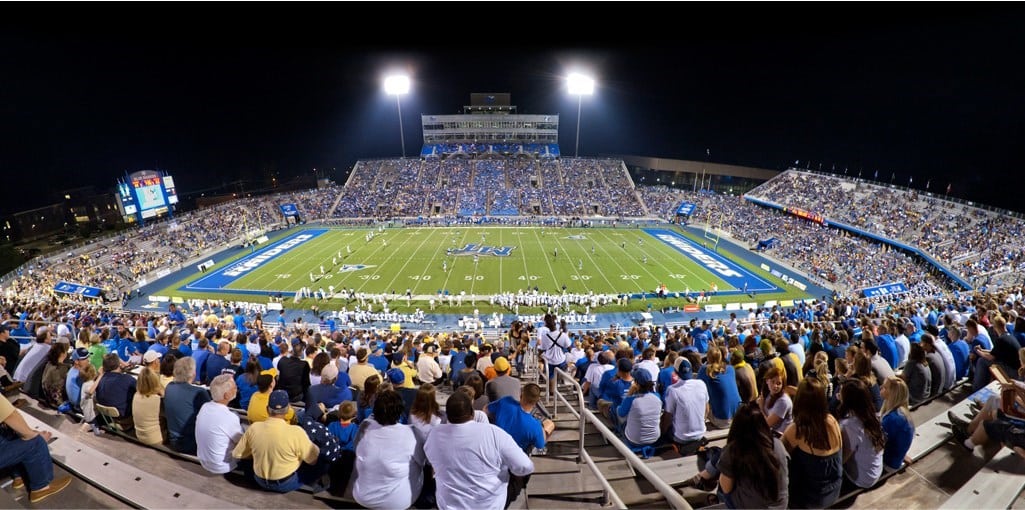
Middle Tennessee State University (MTSU) is a public institute which is based in Murfreesboro, Tennessee. MTSU dates back to 1911, when it was founded as Middle Tennessee State Normal School, offering a two-year program for teacher training. The school became a four-year teachers’ college by 1925, and a full university in 1965. Today, MTSU comprises 9 schools and colleges, and awards over 80 majors and degree programs through a total of 35 departments. Among the most highly-regarded of its academic programs are Aerospace, Music, Recording Industry, and Concrete Industry Management programs. The school conducts research through partnerships with the Oak Ridge National Laboratory and the US Army and Marine Corps. U.S. News and World Report ranks MTSU 231st in National Universities, and is recognized as a “community engaged university” by the Carnegie Foundation.
The varsity athletic teams of Middle Tennessee State University are known as the Blue Raiders, represented by the colors blue and white and by a winged horse mascot. The Blue Raiders compete in NCAA Division I (Bowl Subdivision in football) in Conference USA, and the school fields a total of 15 intercollegiate teams. MTSU teams have won two national championships. The golf team won in 1965, and the men’s doubles tennis team won in 2007. The MTSU baseball team has won sixteen conference titles and played in fourteen NCAA tournaments, while the football team has twice won the Sun Belt Championship, in 2001 and 2006, and played in a total of five bowl games. Traditional rivals include the Western Kentucky Hilltoppers, the Marshall Thundering Herd, and the Memphis Tigers. MTSU spends a total of $85,830 annually per athlete. Of this, the university itself subsidizes $52,737, or about 61%.